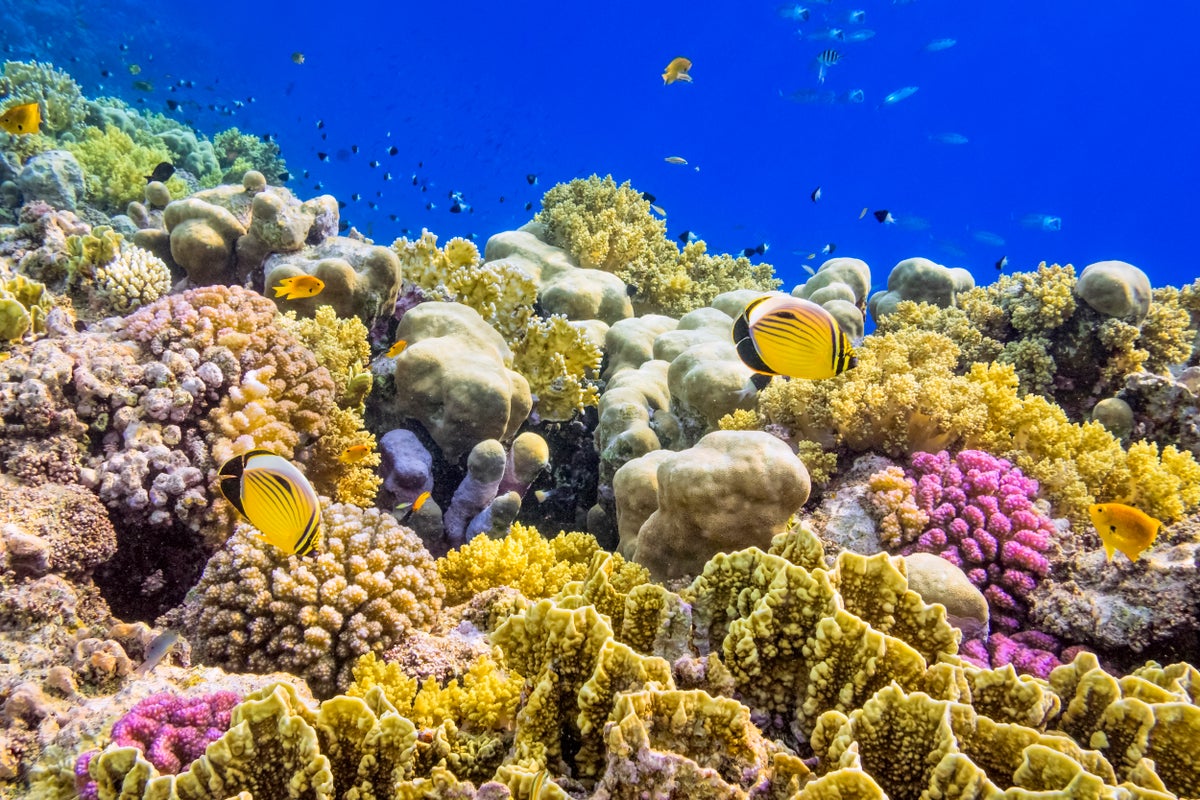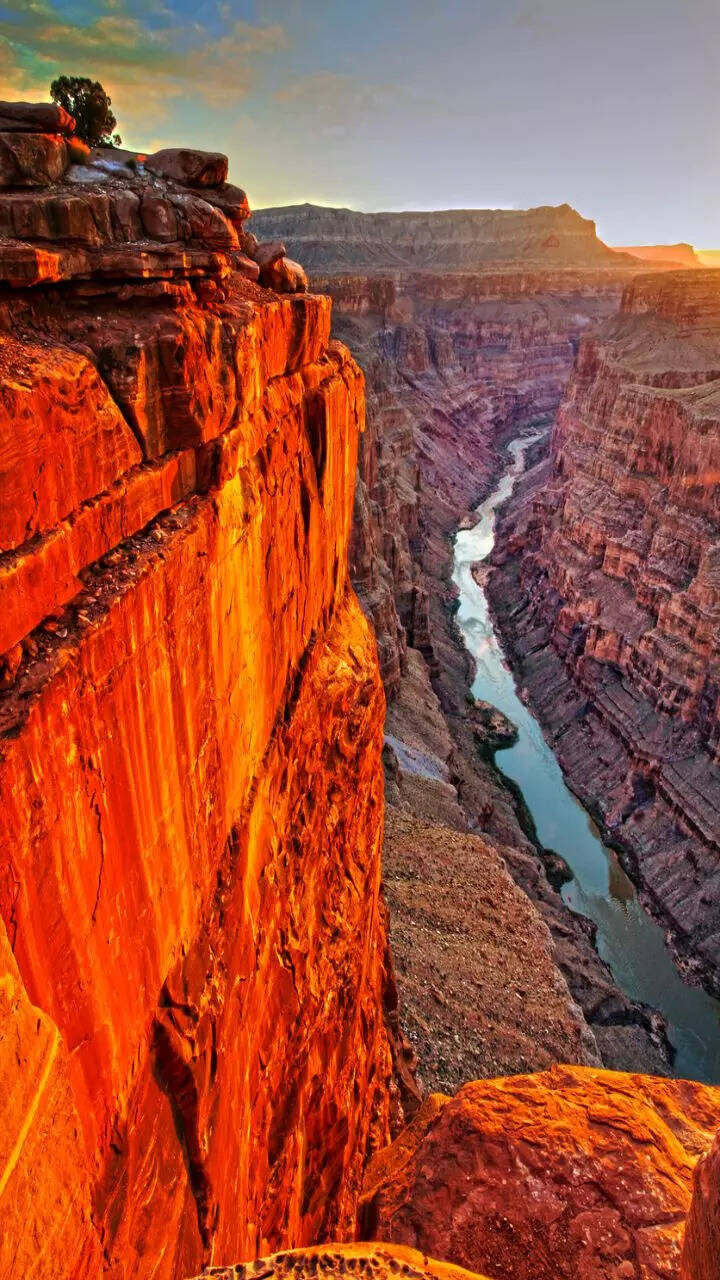Understanding the Minor Relief of the Ocean Floor is a crucial and straightforward subject in Geography, providing an opportunity for scoring well. The insights mentioned in the text are valuable for various competitive exams like banking PO, SSC, state civil services, and others. This composition comprehensively covers the theme of Minor Relief of the Ocean Floors.
The Minor Relief of Ocean Floors is categorized into four main divisions and several supporting features within the ocean floor, including:
- Mid-Oceanic Ridges
- Seamounts
- Guyots
- Trenches
- Canyons
Mid-Oceanic Ridges
Mid-Oceanic Ridges refer to extensive underwater mountain chains found in the middle of ocean basins. These geological features are characterized by elevated ridges where tectonic plates diverge, allowing magma from the Earth's mantle to rise and solidify, forming new oceanic crust. Mid-Oceanic Ridges play a crucial role in plate tectonics, contributing to the Earth's dynamic processes and the creation of new oceanic crust. These ridges are significant sites of scientific exploration, providing insights into the Earth's geology and the interactions between tectonic plates
Seamounts
Seamounts are underwater mountains that rise prominently from the ocean floor but do not reach the water's surface. These geological formations are typically of volcanic origin and can vary in size and shape. Seamounts are characterized by their steep slopes and summits, and they are found in various oceanic regions around the world. Over time, some seamounts may erode and submerge, while others can be active or dormant volcanoes. These underwater features contribute to the biodiversity of marine ecosystems, providing habitats for a diverse range of marine life
Guyots
Guyots, also known as tablemounts, are submerged flat-topped seamounts with a distinctive flattened summit. These geological formations were once volcanic islands, but over time, due to subsidence and erosion, they have become submerged beneath the ocean surface. Guyots are characterized by a flat, plateau-like top, often marked by coral reefs. The subsidence of guyots is believed to be associated with the cooling and contracting of the Earth's crust. These features provide valuable insights into the geological history and processes shaping the ocean floor
Trenches
Trenches are long, deep depressions on the ocean floor, typically formed as a result of the subduction of one tectonic plate beneath another. These elongated and narrow features are some of the deepest parts of the Earth's oceans. Trenches are associated with intense geological activity, as one tectonic plate is forced beneath another in a process known as subduction. The Mariana Trench, the deepest known trench, reaches a maximum depth known as the Challenger Deep. Trenches play a pivotal role in plate tectonics, representing dynamic zones where tectonic plates interact and shape the Earth's crust
Canyons
Canyons refer to deep and steep-sided valleys or channels on the ocean floor. Unlike terrestrial canyons, oceanic canyons are hidden beneath the water's surface. These underwater features can be formed through various geological processes, including erosion, tectonic activity, or the movement of sediment. Oceanic canyons are diverse in size and shape, and they play a crucial role in transporting sediments, nutrients, and organic material across the ocean floor. These underwater landscapes contribute to the complexity and biodiversity of marine ecosystems
Volcanic Islands
Volcanic islands are landforms that originate from the accumulation of volcanic materials, such as lava, ash, and volcanic rocks, emerging above the ocean surface. These islands are formed through volcanic activity, where magma rises from the Earth's mantle, erupts through the ocean floor, and solidifies to create new land. Volcanic islands are often associated with tectonic plate boundaries, where tectonic plates converge or diverge. Over time, through continuous volcanic processes, these islands can grow and evolve. Volcanic islands are not only geologically dynamic but also serve as unique ecosystems, hosting diverse flora and fauna shaped by their volcanic origins
Fracture zones
Fracture zones are linear oceanic features characterized by long and narrow breaks or cracks in the Earth's crust. These zones are associated with transform faults, which are boundaries between tectonic plates where they slide past each other horizontally. Fracture zones are marked by numerous fractures and faults, contributing to the overall geological structure of the ocean floor. As tectonic plates move, these fracture zones accommodate the lateral movement, creating a distinctive pattern of linear features. The orientation and arrangement of fracture zones provide valuable insights into the dynamic processes occurring beneath the Earth's oceans
Hotspots
Hotspots are geologically active areas on the Earth's surface where magma from the mantle rises to create volcanic features. Unlike typical plate boundaries, hotspots are stationary and represent areas of concentrated volcanic activity. The heat source responsible for these hotspots is believed to be a deep-seated mantle plume. As the tectonic plate moves over the hotspot, a chain of volcanic islands or seamounts is formed. The Hawaiian Islands are a well-known example of a hotspot trail. Hotspots provide significant information about mantle dynamics, and their volcanic activity contributes to the formation and evolution of landforms on the Earth's surface
Coral Islands
Coral islands, also known as atolls, are unique landforms formed by the accumulation and growth of coral reefs in shallow tropical or subtropical waters. These islands typically emerge in areas where oceanic conditions are conducive to the growth of coral colonies. The process begins with the establishment of coral polyps, which secrete calcium carbonate skeletons, forming reefs over time. As the reefs continue to grow and expand, they encircle a lagoon, eventually creating a ring-shaped or circular island with a central lagoon. Coral islands are characterized by their exquisite biodiversity, as coral reefs provide habitats for a variety of marine life. They are often found in regions with warm waters and clear oceanic conditions
Atoll
An atoll is a ring-shaped coral reef, island, or series of islets that encircle a central lagoon. Atolls are formed from the remnants of volcanic islands, and their characteristic ring shape is a result of the growth of coral reefs over submerged volcanic calderas or islands. The process begins with the establishment of coral polyps, which secrete calcium carbonate skeletons, forming reefs over time.
As the volcanic island subsides or erodes over millions of years, the coral continues to grow upward, forming a circular or horseshoe-shaped reef structure with a central lagoon. Atolls are commonly found in warm tropical or subtropical waters, and their unique formations contribute to rich marine ecosystems, supporting diverse aquatic life. Notable examples of atolls include the Maldives in the Indian Ocean and the Marshall Islands in the Pacific Ocean

.jpg)









